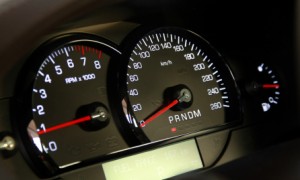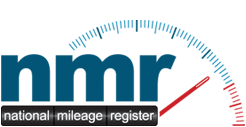What is ‘Clocking’?
 Mileage recalibration is a process which involves changing the mileage reading on the milometer / odometer (ODO) of a vehicle and changing it to a different mileage. Adjusting a vehicle’s digital ODO is NOT illegal here. It only becomes illegal if you knowingly sell the vehicle without disclosing the modification of the speedometer reading. This process of mileage recalibration and non-disclosure of the calibration is known as ‘Clocking’. ‘Clocking’ or turning back the mileage reading on a vehicle is a major problem in Ireland and the UK, costing an estimated £100 million per annum in the UK alone! If a vehicle has mileage that is considerably higher than the average for that vehicles age and model, then the value of that vehicle will be less than a similar vehicle with less mileage. This is because all the parts will have more wear and tear and the vehicle will not feel as new as the vehicle with average mileage. Car dealers and the public have been known to have recalibrated some vehicles ODO to a lower mileage and sold the vehicle without disclosing it to the customer so that a higher price can be obtained for the vehicle. According to Sustainable Energy Ireland, the average annual mileage on privately owned petrol cars in Ireland is about 10,000 miles (16,000 km), or about 15,000 miles (24,000 km) for diesel.
Mileage recalibration is a process which involves changing the mileage reading on the milometer / odometer (ODO) of a vehicle and changing it to a different mileage. Adjusting a vehicle’s digital ODO is NOT illegal here. It only becomes illegal if you knowingly sell the vehicle without disclosing the modification of the speedometer reading. This process of mileage recalibration and non-disclosure of the calibration is known as ‘Clocking’. ‘Clocking’ or turning back the mileage reading on a vehicle is a major problem in Ireland and the UK, costing an estimated £100 million per annum in the UK alone! If a vehicle has mileage that is considerably higher than the average for that vehicles age and model, then the value of that vehicle will be less than a similar vehicle with less mileage. This is because all the parts will have more wear and tear and the vehicle will not feel as new as the vehicle with average mileage. Car dealers and the public have been known to have recalibrated some vehicles ODO to a lower mileage and sold the vehicle without disclosing it to the customer so that a higher price can be obtained for the vehicle. According to Sustainable Energy Ireland, the average annual mileage on privately owned petrol cars in Ireland is about 10,000 miles (16,000 km), or about 15,000 miles (24,000 km) for diesel.
Dangers of buying a clocked car
As a car ages, services and regular maintenance work need to be carried out on every vehicle. These intervals are usually calculated based on the mileage of the vehicle. For example, If your vehicle needed a timing belt at 60,000 miles and you bought the vehicle with 20,000 miles on the ODO, and it was clocked back from 80,000 miles, then you will wait another 40,000 miles before changing that belt. This means that the car actually has 120,000 miles instead of the displayed 60,000. This means that the timing belt has done twice the mileage then it was intended and this can cause several problems. Also with the incorrect mileage displayed, your general servicing, like brakes and fluids will not be changed when they are scheduled and therefore may cause failure.
How easy is it to clock a car?
If you look in your local car magazine, you will find many different vendors offering ‘Mileage recalibration services’. These guys will come to you and adjust your ODO for a fee, usually between 80 and 200 Euro pending on the vehicle and location. Most cars are easily calibrated without the need to remove the clock cluster. Sometimes, the vendor will need to remove the clock cluster from your vehicle. He will connect the clock cluster to either a PC or a specially designed hand held device. The software used on both of these devices will then change the ODO reading to whatever mileage you choose. The hand held device is specially designed for mileage recalibration so no code calculation is necessary. However, on a PC you will need software such as ‘Tachosoft’ to calculate a special code like ‘120,000km = 23CD8413bca3’ which is then inputted into the clock cluster. Some software actually wipes all the information off the memory chip including additional details, such as chassis numbers and VIN numbers. Most cars are easily calibrated without the need to remove the clock cluster. What’s more the specially designed hand-held process cannot be traced.
Why would you need to recalibrate the vehicles ODO?
Most Modern cars have electronic dashboards with digital ODO displays. The car manufacturers use these because they are cheaper to produce than a mechanical dashboard and easier to fit into the car as there is no mechanical speedometer cable. This new technology has its own problems though. Electrical pulses in the cars wiring can cause the dashboard data, which is stored internally on an EEPROM (Electrically Erasable Programmable Read Only Memory), to become corrupted.
This corruption could happen for a number of reasons:
- the vehicle battery was discharged and the vehicle had been jump started
- the dashboard may develop an electrical fault
- the dashboard may be damaged in a collision or through vandalism.
In these examples, the corruption of the information held in the EEPROM may mean that the mileage displayed on the ODO is now incorrect. Dashboard correction may also be necessary where a replacement cluster has been purchased, either new or second hand. If it’s a new one it will have zero miles on it. If it’s a second hand one the mileage displayed is also likely to be different to the original thus requiring correction.




